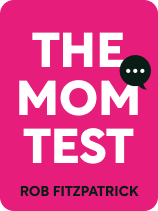

This article is an excerpt from the Shortform book guide to "The Mom Test" by Rob Fitzpatrick. Shortform has the world's best summaries and analyses of books you should be reading.
Like this article? Sign up for a free trial here.
Do you need to know how to talk to customers? What do you get out of talking to customers?
Turning discussions with customers into constructive feedback should be an ongoing routine at any business. In The Mom Test, Rob Fitzpatrick gives advanced tips on how to use discussions with customers to enhance your business.
Let’s look at how to talk to customers to give your business a boost.
Tip #1: Involve All Core Team Members in Discussions With Customers
Fitzpatrick states that an important aspect of mastering how to talk to customers is to understand all of your business’s core team members should be present for some discussions with customers. If the founder of a startup is the only one to ever talk with customers, they may unintentionally neglect to share important information with the rest of the team.
(Shortform note: Although it’s important to make sure everyone on the team is well informed, take care not to force team members to attend conversations with customers when their time would be better spent elsewhere. This is an easy mistake to make: In Indistractable, Nir Eyal argues that when we want to avoid the discomfort of a difficult problem, we often invite team members along to meetings in hopes that they’ll solve the problem for us.)
Tip #2: Take Notes During Discussions With Customers
Fitzpatrick asserts that another important aspect of conducting the conversation is taking notes. By recording and organizing the information you learn, you’ll have an easier time accurately recalling past conversations and keeping your other team members informed.
Fitzpatrick advises having a designated note-taker at most meetings so you don’t have to take notes and run the meeting at the same time. In addition, write down direct quotations when possible. Not only do quotes help you be objective when referring back to your notes, but they can also later be used for marketing and fundraising.
(Shortform note: Taking notes doesn’t just help you in the long run, as Fitzpatrick states—it also helps you stay engaged during the conversation itself. The process of taking notes keeps you alert and focused on what the customer is saying. If you normally have trouble staying focused, you may consider taking notes yourself rather than designating a note-taker. Another way you can make your note-taking more active is by rephrasing the conversation in your own words instead of copying down exact quotations as Fitzpatrick recommends. This will help you process what you’re learning and spark creative new ideas.)
Tip #3: Actively Learn From Discussions With Customers
Fitzpatrick explains that to get the most out of talking to customers, you must dedicate time to reviewing what you’ve learned. Review your notes with the rest of your team as soon as possible to make sure everyone is cooperating smoothly. Based on this information, consider how you could improve your business strategy, as well as what you could do better in the next customer conversation. Finally, in preparation for your next conversation, decide on your next three learning objectives.
(Shortform note: In Extreme Ownership, Jocko Willink and Leif Babin similarly advocate for regular “debriefs” to get your whole team on the same page and identify areas of improvement. They have their own explanation as to why this practice is effective: By including your whole team in the review process and gathering their input as you adjust your strategies and plan your next learning objectives, you inspire them to take ownership of the strategies you decide to pursue. They’ll feel emotionally invested in and personally responsible for the team’s success, making them far more effective team members than passive subordinates who just do what they’re told.)
Tip #4: Never Stop Seeking Feedback
Fitzpatrick advises that you continue to seek feedback from customers as needed throughout the lifespan of your company. Once your product is a proven success, you won’t have to spend as much time talking to customers as when you’re first starting out, but it’s helpful to maintain an ongoing stream of feedback as your business continues to grow.(Shortform note: It’s important to never stop seeking feedback because companies often lose touch with what their customers want after achieving success.
In Good Strategy/Bad Strategy, Richard Rumelt explains that these companies lose touch with customers because of the twin forces of inertia and entropy: People in any organization will default to doing things the way they’ve always been done, even if it’s no longer effective (inertia), and organizations become more disorganized over time unless they’re actively managed (entropy).)

———End of Preview———
Like what you just read? Read the rest of the world's best book summary and analysis of Rob Fitzpatrick's "The Mom Test" at Shortform.
Here's what you'll find in our full The Mom Test summary:
- How to ask the right questions to receive brutal honesty from anyone—even your mom
- How to use the “Mom Test” to gather objective feedback about your business or product
- How to extract the most important information from feedback conversations






